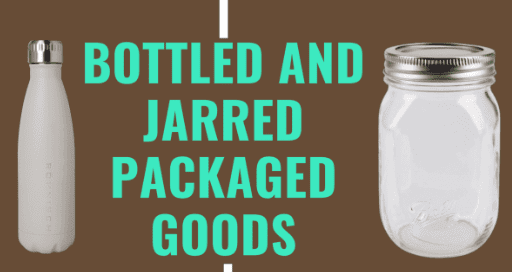When it comes to food, many people prefer the convenience of bottled and jarred packaged goods. They believe that these foods are fresher and more consistent in flavor than supermarket produce. However, there are a few things to consider before making this choice.
-First of all, most bottled and jarred foods are not fresh. They may have been stored in a warehouse or transit for weeks or even months before being sold. This means that they may be full of bacteria and other contaminants that could make you sick.
–Secondly, many packaged foods contain high amounts of sugar (in particular fructose) which can increase your risk for obesity and other health problems. Consuming too much sugar can also lead to brown fat gain – something you don’t want when trying to lose weight!
So should you avoid bottled and jarred foods altogether? No – but please make sure to read the ingredients carefully before buying them so you know exactly what’s going into your meal!
Bottled and jarred packaged goods can be a convenient way to store food, but they come with some risks.
Bottled foods are susceptible to spoilage, which can occur due to exposure to air, light, or bacteria. This means that if you don’t eat the food immediately it will start going bad. Jars of food also have a risk of exploding if the seal is not maintained correctly. And finally, many bottled drinks contain high levels of sugar and unhealthy additives that can cause health problems over time.
If you’re looking for convenience and want to avoid any potential health risks, then bottled and jarred packaged foods may be a good option for you. But be sure to read the labels carefully before selecting products, and shop only from trusted sources.
Bottled and jarred packaged goods are a popular choice for many people. They’re convenient, easy to store, and often have longer shelf lives than other types of food. However, there are some things to keep in mind when choosing these foods.
First of all, check the ingredients list carefully. Many packaged foods contain unhealthy additives or preservatives that can be harmful to your health. In addition, many bottled juices and smoothies contain high levels of sugar – which is not good for your diet or waistline!
Secondly, make sure the packaging is durable enough to protect the food inside from moisture and pests. If you live in an area where it rains frequently (or if you just don’t care about protecting your possessions), then using a zip-top bag may be a better option than buying pre-packaged food items.
Finally, remember that stored packaged foods should only be eaten once they’ve been opened – otherwise, they’ll go bad rapidly
Bottled and jarred packaged goods can be convenient, but they’re also high in calories and sugar. Many people are turning to unpackaged foods to eat on the go or snacks for their home kitchens. However, it’s important to know what kind of food is inside these containers before you decide whether or not to buy them.
Many bottled and jarred foods are full of sugar, sodium, and even unhealthy fats. For example, a 12-ounce bottle of soft drink containing 140 milligrams (mg) of sugar can contain as much as 400 mg of total fat! That’s more than half the daily limit for saturated fat set by the American Heart Association (AHA). In addition, many boxed salads contain high amounts of salt – up to 4 grams per serving! And processed foods like chips and cookies often rely heavily on artificial ingredients that may not be good for your health.
If you’re looking for convenience food that won’t sabotage your dieting goals or harm your body, stick with unpackaged alternatives like fruits and vegetables at home. They’ll still taste great and fresher than anything you’ll find in a bottle or box!
For more interesting blogs: themarketsky.com



































